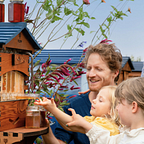Ultimate Beekeeping Monthly Calendar 2024
Beekeeping isn’t just a hobby; it’s a delicate dance with nature’s rhythms. To ensure thriving hives and healthy colonies, beekeepers rely on a meticulous calendar aligned with the seasons. The Ultimate Beekeeping Calendar 2024 is more than a schedule, it’s your key to understanding the right needs of your buzzing friends throughout the year. It is going to be a long read so I recommend you download the refined ultimate beekeeping monthly calendar to read later.
Beekeeper’s Tasks For Winter Wonderland: December-February
- Hive Monitoring: While bees are dormant, periodically check hives for signs of moisture or pests. Ensure entrances remain unblocked.
- Education and Planning: Use the quieter season for beekeeper education and planning for the upcoming year. It is recommended to learn more about disease treatments and pest control.
3. Preparing for Spring: As winter nears its end, start planning for the upcoming spring season, considering potential hive splits or expansion.
The Buzz of Spring: March-May
1. Hive Inspections: Kickstart the season with thorough hive inspections. Check for queen health, brood patterns, and hive space adequacy.
2. Swarm Prevention: Examine hive population growth and consider splitting colonies if necessary to prevent swarming.
3. Nectar Flow Preparation: As flowers bloom, bees gather nectar abundantly. Ensure hives have ample space for honey storage.
Beekeeper’s Summertime Tasks: June — August
1. Honey Harvesting: The golden season for honey extraction! Harvest excess honey while ensuring enough reserves for bees.
2. Pest Management: Keep a close eye on pest and mite levels. Implement treatments if needed, prioritizing organic methods. Discover proven strategies to identify, control and prevent pests, diseases and invaders through the modern eco-friendly hive management and bee health manual.
3. Water Sources: Provide water stations near hives to help bees stay hydrated during hot days.
Autumn: September-November
1. Preparing for Winter: Inspect hives for adequate honey stores. Supplement feeding if necessary for winter survival.
2. Varroa Mite Control: Focus on managing mite levels before winter sets in. Treat hives to reduce mite impact.
3. Hive Insulation: Prepare hives for colder weather by ensuring adequate insulation against the dropping temperatures.
Conclusion:
A beekeeping calendar is of great essence to the beekeeper but it is does not guarantee complete hive health and healthy colonies. To grab the art of raising healthy colonies and hive health, it is advised to adopt eco-friendly hive management practices. The modern eco-friendly hive management and bee health manual is a comprehensive guide crafted by experts to promote sustainable practices that foster healthier hives and a greener world.
The Ultimate Beekeeping Calendar 2024 isn’t just a timetable; it’s a lifeline for your hives. By aligning your practices with the natural rhythms of each season, you can ensure the health and prosperity of your bees while fostering a sustainable and thriving beekeeping venture.
